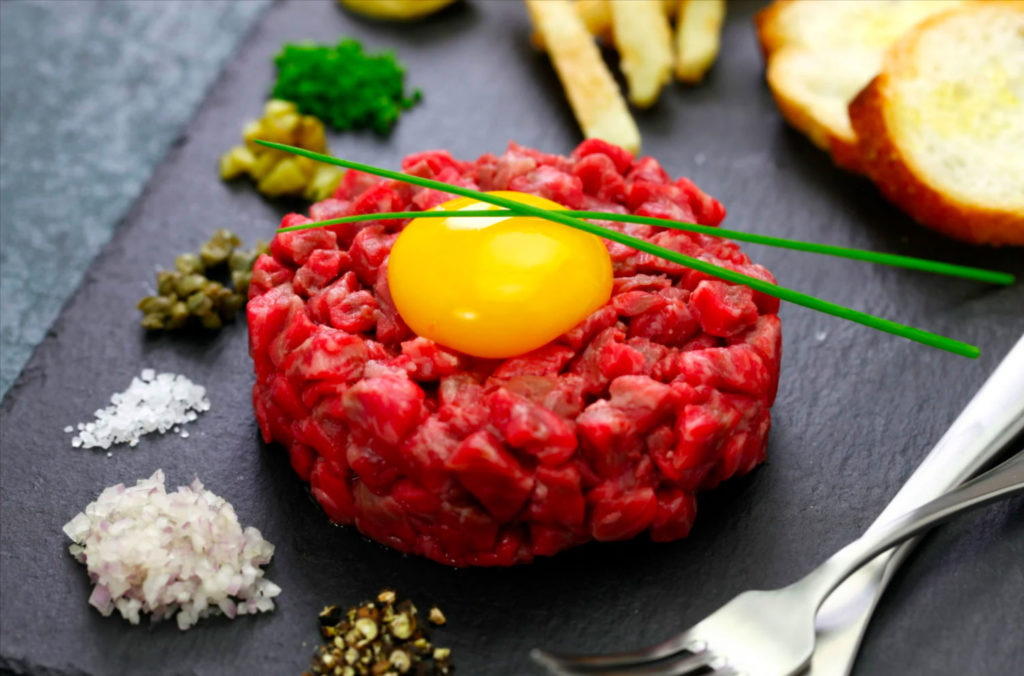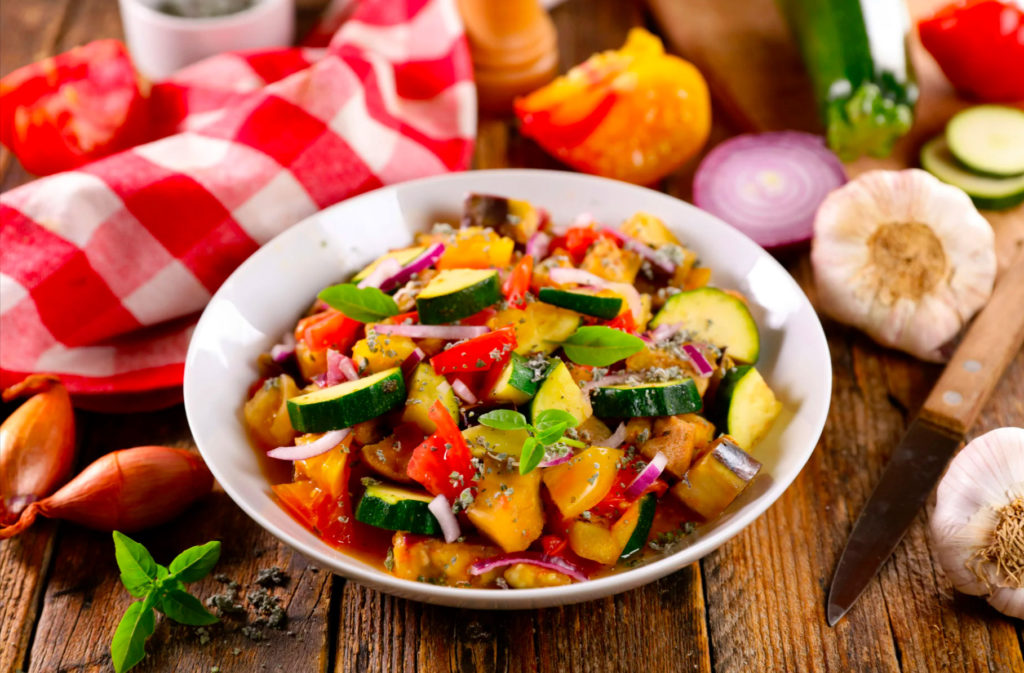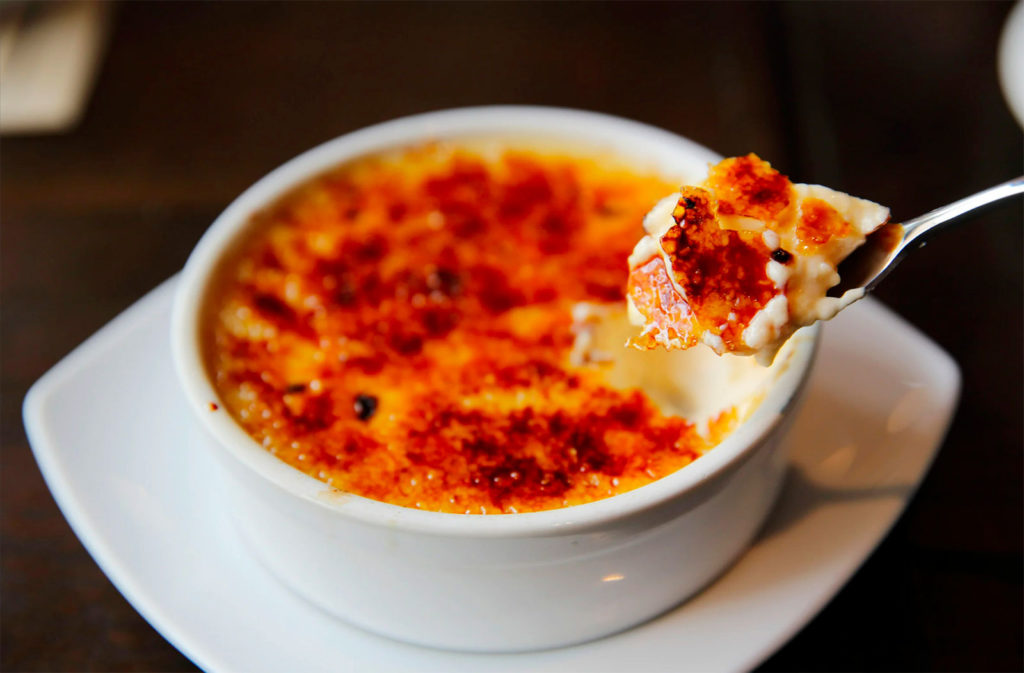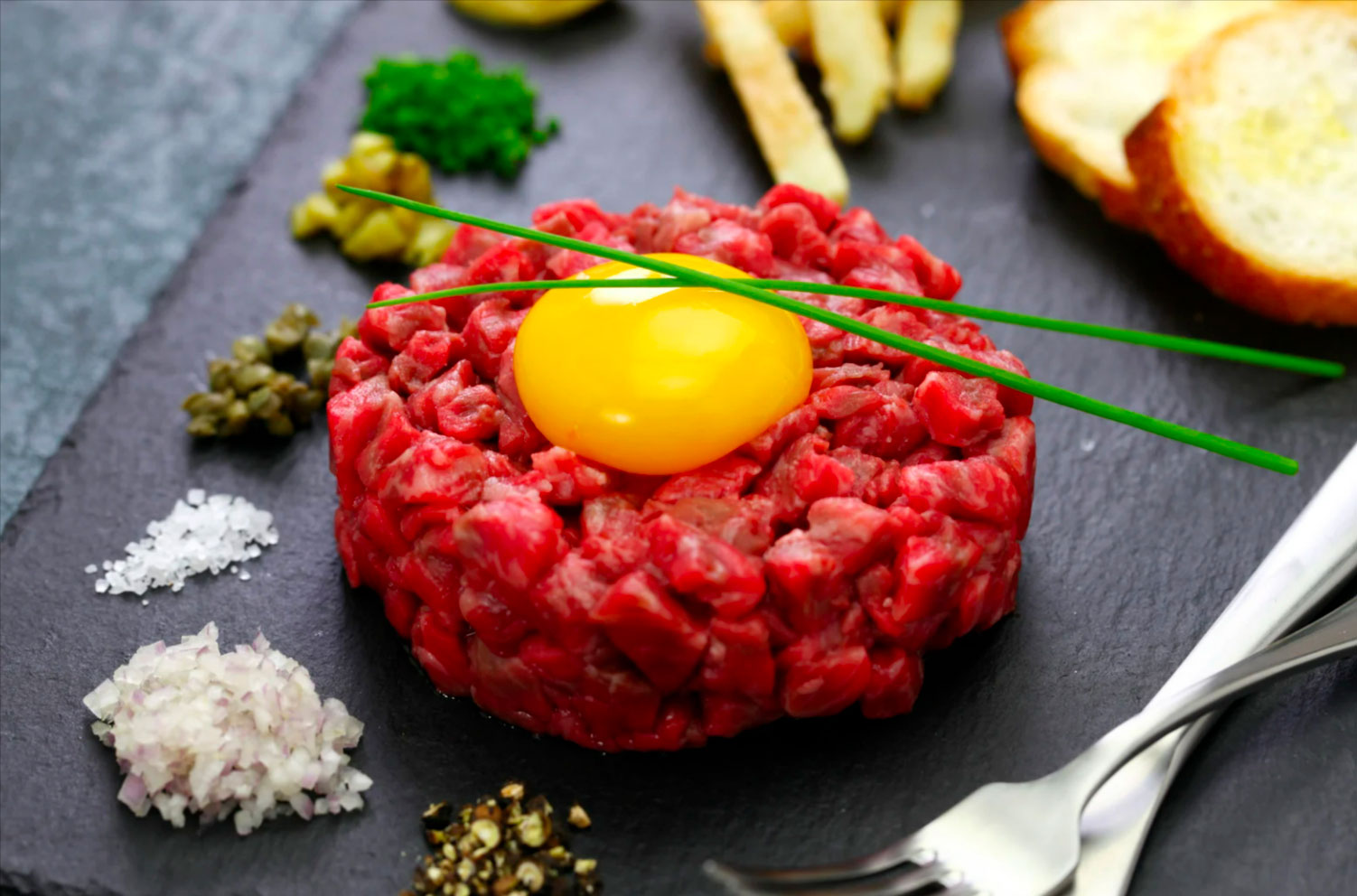Discover the rich tapestry of France’s most beloved dishes, from hearty stews to delicate pastries, reflecting the nation’s diverse culinary heritage.
France’s culinary landscape is celebrated worldwide for its depth and variety. Each region offers unique specialties, contributing to a rich national cuisine. This article delves into some of the most popular French dishes, exploring their origins, ingredients, and cultural significance.
Classic French Starters
Salade Lyonnaise
Salade Lyonnaise is a traditional dish from Lyon, a city known for its rich gastronomic culture. This warm salad consists of frisée lettuce, lardons (crispy bacon pieces), croutons, and a poached egg. The dressing, typically a simple vinaigrette made with Dijon mustard, red wine vinegar, and olive oil, enhances the dish’s balance of acidity and richness. The runny yolk from the poached egg combines with the dressing, coating the lettuce and bacon in a creamy texture. Some variations include adding chicken liver for a more intense flavor. This salad is often served as a starter in Lyonnais bouchons, small traditional restaurants specializing in regional cuisine. Salade Lyonnaise represents the blend of rustic and refined flavors that characterize French cooking. It is a simple yet satisfying dish that showcases the quality of its ingredients, making it a popular choice across France.

Steak Tartare
Steak tartare is a dish that highlights the French appreciation for raw, high-quality ingredients. It consists of finely chopped or minced raw beef, often sourced from the tenderloin or sirloin. The meat is seasoned with finely diced onions, capers, Worcestershire sauce, mustard, salt, and pepper, and sometimes enhanced with cornichons or parsley. A raw egg yolk is traditionally placed on top, adding richness and binding the flavors together. The dish is typically served with toasted bread or thin-cut fries. Steak tartare originated in the early 20th century and gained popularity in Parisian bistros, where it is still a staple. The key to its success lies in using fresh, high-grade beef and balancing the acidity of the seasonings. Though often associated with French cuisine, variations exist in other countries, but the French version remains one of the most recognized worldwide.
Hearty Main Courses
Coq au Vin
Coq au Vin is a slow-cooked French dish that originated in the Burgundy region. It is made by braising chicken—traditionally an older rooster—in red wine, often Burgundy or a full-bodied variety like Côtes du Rhône. The dish includes mushrooms, pearl onions, carrots, garlic, and lardons (small pieces of pork belly or bacon), which contribute to its deep flavor. The slow cooking process allows the meat to absorb the wine and aromatics, making it tender and flavorful. The sauce is thickened with flour or butter, creating a rich consistency. Coq au Vin is typically served with mashed potatoes, crusty bread, or buttered noodles to soak up the sauce. While Burgundy is the most common variation, regions like Alsace and Champagne have their own versions using local wines. This dish showcases the depth of traditional French braising techniques.
Bouillabaisse
Bouillabaisse is a traditional fish stew from Marseille, originally prepared by fishermen using unsold fish. The dish consists of various fish species, such as monkfish, red mullet, and John Dory, combined with shellfish like mussels and prawns. The broth is infused with saffron, fennel, leeks, tomatoes, and garlic, giving it a distinct aroma. The cooking process involves simmering the ingredients slowly to extract the flavors from the fish and seafood. Bouillabaisse is typically served with a side of rouille, a garlicky saffron mayonnaise, spread on toasted bread and dipped into the broth. While historically a humble dish, today it is a staple of French coastal cuisine and often prepared with premium seafood. Authentic bouillabaisse is served in two parts: the broth is enjoyed first, followed by the fish and seafood on a separate plate.
Beloved Side Dishes

Ratatouille
Ratatouille is a vegetable dish from Provence, showcasing the flavors of the Mediterranean. It is made by slow-cooking eggplant, zucchini, bell peppers, onions, and tomatoes with olive oil, garlic, and herbs such as thyme and basil. There are two common preparation methods: layering the vegetables and baking them (as seen in the modern version) or cooking them together in a pot for a rustic stew-like consistency. Originally a peasant dish, ratatouille has evolved into a celebrated part of French cuisine. It is served as a side dish or a main course, often accompanied by bread, rice, or pasta. The balance of sweet and savory flavors makes it a versatile and healthy option. Though simple, ratatouille requires careful attention to timing and layering of flavors to achieve the perfect taste.
Gratin Dauphinois
Gratin Dauphinois is a rich and creamy potato dish from the Dauphiné region in southeastern France. It consists of thinly sliced potatoes baked in cream, garlic, and nutmeg. Unlike other potato gratins, it does not contain cheese, relying instead on the natural starch of the potatoes to create a thick, velvety texture. The dish is slow-baked at a low temperature, allowing the potatoes to absorb the cream and develop a golden crust. It is traditionally served as a side to roasted meats or poultry. The key to a perfect Gratin Dauphinois is selecting waxy potatoes that hold their shape during baking. Some modern versions include cheese, but purists argue that true Gratin Dauphinois should remain simple, focusing on the natural flavors of its ingredients.
Decadent Desserts

Crème Brûlée
Crème Brûlée is a custard dessert with a caramelized sugar crust. The custard is made from cream, egg yolks, sugar, and vanilla, creating a smooth and creamy base. It is baked in individual ramekins in a water bath to ensure even cooking. The signature caramelized topping is achieved by sprinkling sugar over the custard and torching it until it forms a crisp, golden layer. The contrast between the creamy custard and the brittle caramel makes it a unique sensory experience. Originating in France, the dish has been adapted worldwide, but the traditional French version remains a staple in fine dining. The key to a perfect Crème Brûlée is balancing the richness of the custard with the slight bitterness of the caramelized sugar.
Tarte Tatin
Tarte Tatin is a caramelized upside-down apple tart that originated in the Loire Valley. It is made by cooking apples in butter and sugar until they develop a deep golden caramel, then covering them with pastry and baking the tart upside-down. Once baked, it is flipped over so that the apples are on top, creating a glossy, rich topping. The best apples for Tarte Tatin are firm varieties such as Granny Smith or Golden Delicious, as they hold their shape during cooking. The dish is traditionally served warm, sometimes with a dollop of crème fraîche or vanilla ice cream. Legend attributes the tart’s invention to the Tatin sisters, who ran a hotel in the 19th century and accidentally created the dish. Today, it remains one of France’s most iconic desserts.
Regional Specialties
Quiche Lorraine
Quiche Lorraine is a savory tart from the Lorraine region in northeastern France. It features a buttery, flaky pastry crust filled with a mixture of eggs, cream, and lardons (bacon pieces). The original recipe did not include cheese, but modern variations often incorporate Gruyère or Emmental. The quiche is baked until the filling sets and develops a golden-brown crust. It is enjoyed warm or cold, making it a versatile dish for any meal. While Quiche Lorraine remains the most well-known variety, other versions include vegetables, seafood, or different meats. The balance of rich custard and smoky bacon makes this dish a staple of French cuisine.
Cassoulet
Cassoulet is a slow-cooked dish from the Languedoc region. It consists of white beans, duck confit, Toulouse sausages, and pork, all baked together in a rich broth. The dish is traditionally cooked in a special earthenware pot, allowing the flavors to develop over several hours. Cassoulet is known for its hearty, comforting taste and deep umami flavors. The dish is a reflection of regional peasant cuisine, originally made with whatever meats were available. Today, cassoulet remains a celebrated dish, especially in southwestern France.
France’s culinary traditions offer a diverse array of dishes, each with its own history and regional influence. From starters to desserts, these popular dishes continue to be cherished both within France and around the world.
Cook in France is your gateway to French cuisine and gastronomy in France. Get in touch for your next cooking workshop.
